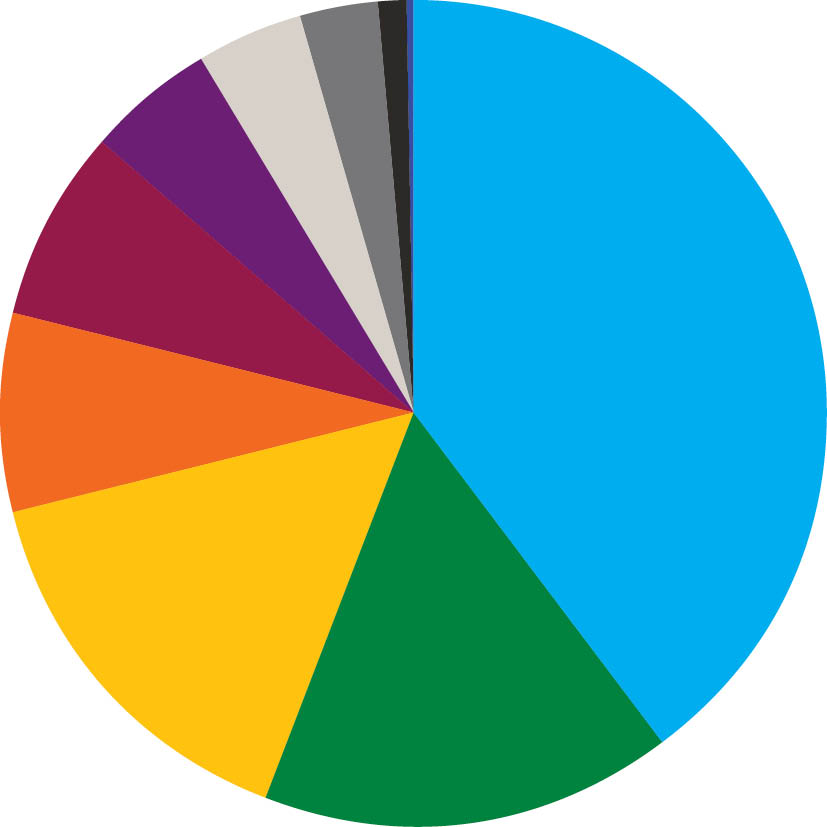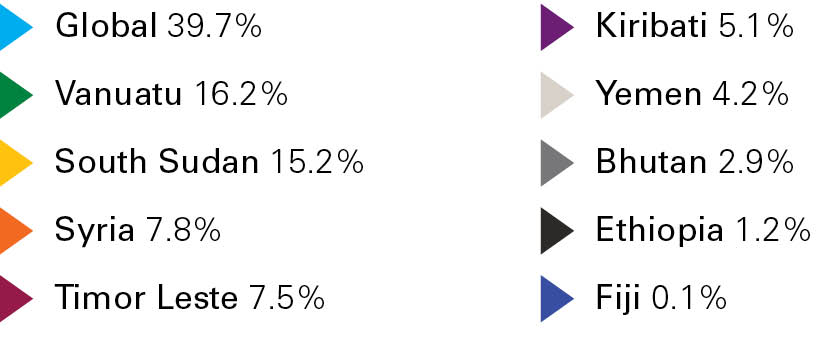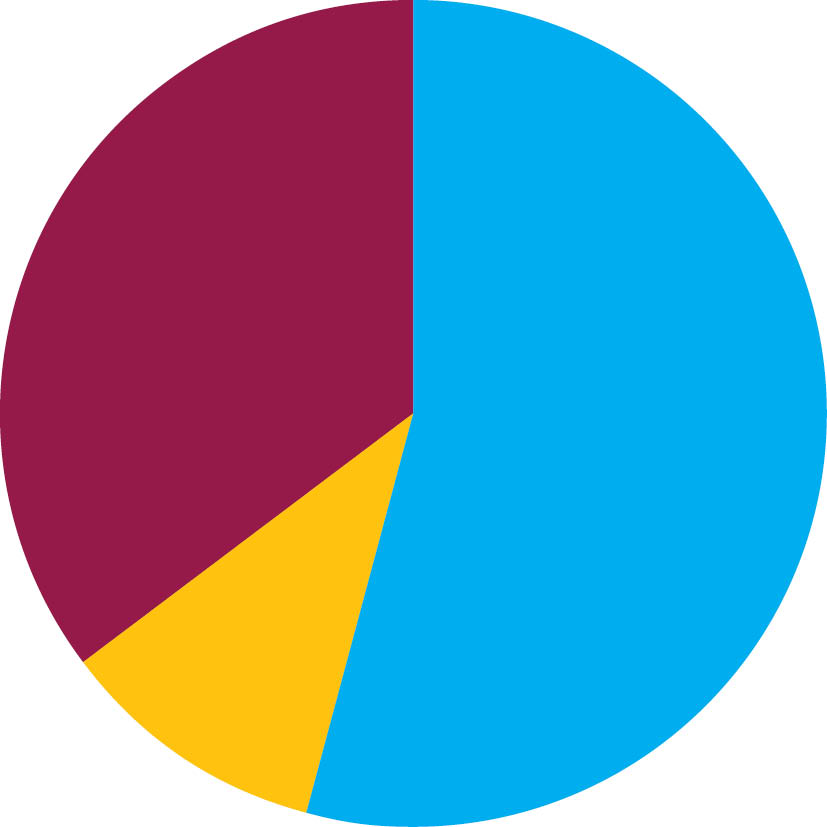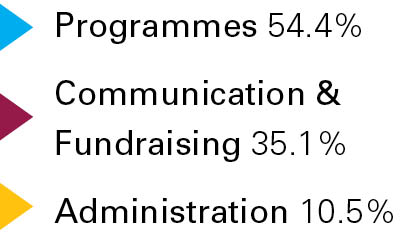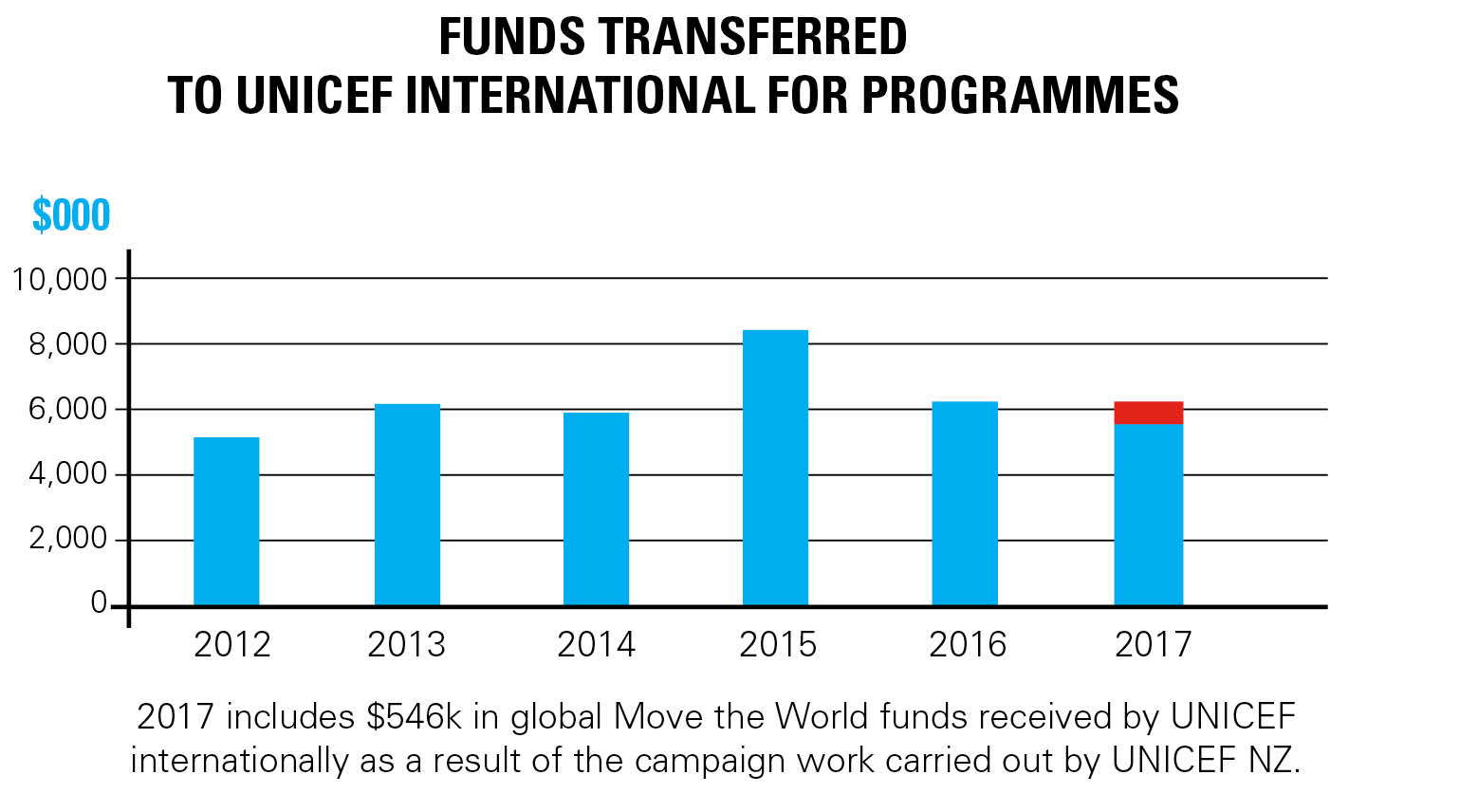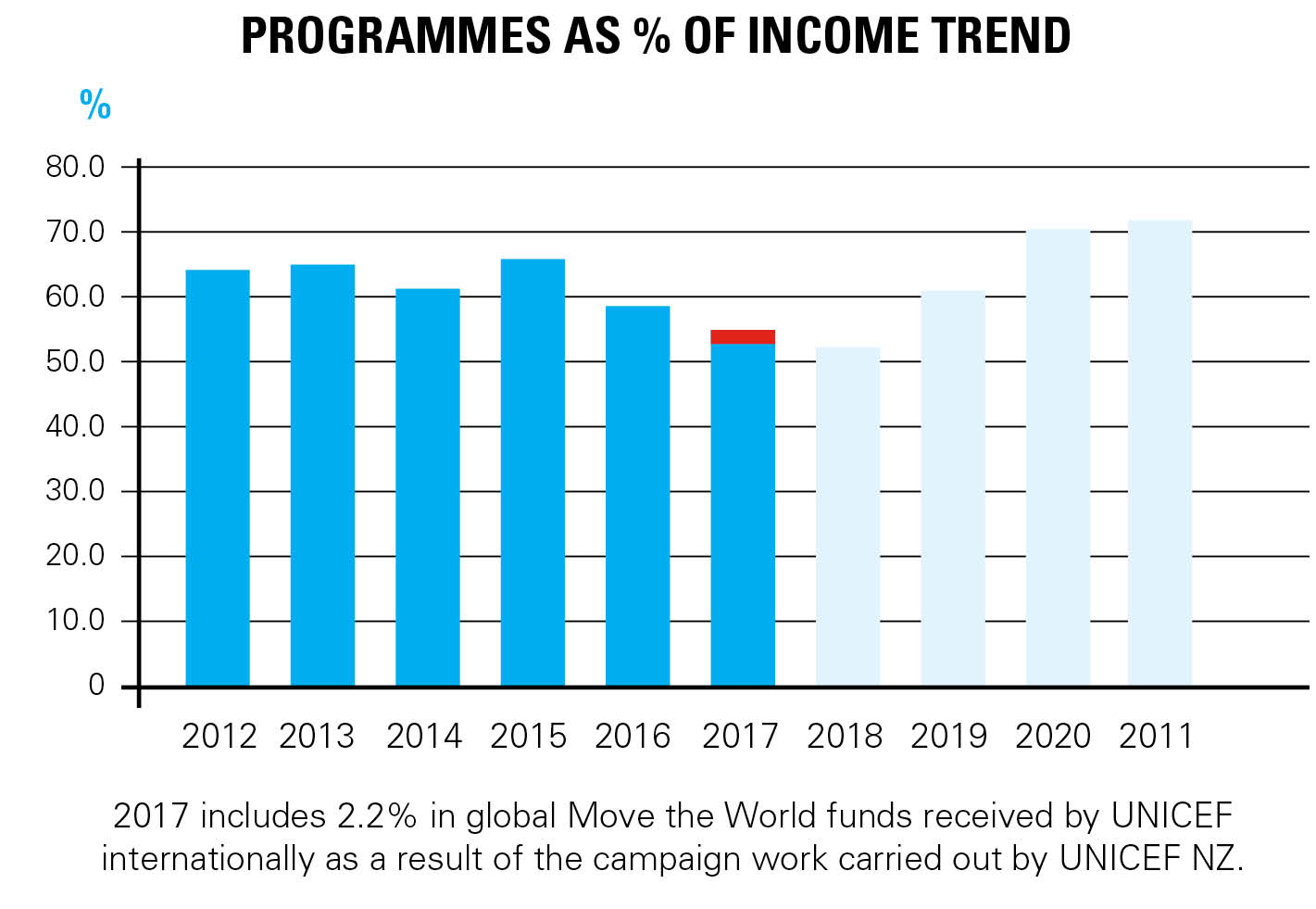It has been a year of incredible firsts. From the first World Children’s Day, to the first Workout for Water, 2017 was at all times a challenging, rewarding, and ground-breaking year.
We faced an unprecedented number of humanitarian crises. Whether from natural disasters, or ongoing conflict, millions of children around the world were in harm’s way and in urgent need of assistance. UNICEF will always be there for children, but our resources are being stretched in ways that we have rarely experienced. The demands upon our organisation, and upon our donors are relentless, and we can only thank our supporters for their unending commitment to helping children in need.
The nature of fundraising and raising awareness of issues affecting children is changing rapidly, and we are constantly needing to innovate and find new ways to connect with our donors and supporters.
We are now starting to see the results of our years of experimenting. This year saw the first big result from the Les Mills International Move The World partnership - a New Zealand-based corporate partnership that is thinking globally rather than just in New Zealand. By using a peer-to-peer fundraising model, we were able to tap into an enormous network of supporters we wouldn’t have otherwise been able to reach. And to have raised more than USD $1.1m for the wider UNICEF organisation in our first year suggests that there is enormous potential to be unlocked as this partnership grows and develops.
Our relationship with the Ministry of Foreign Affairs and Trade is developing further into multi-year, multi-million-dollar contracts, meaning an increase in the size, scale and impact of the projects we can deliver throughout the Pacific. We are working increasingly closely with UNICEF Pacific and other Pacific rim countries such as Timor Leste and Papua New Guinea to ensure we are improving outcomes for children in those countries.
Continued on next slide...
But we haven’t forgotten about our work at home. The June release of UNICEF’s 2017 Innocenti report on the health and wellbeing of children had a massive impact in New Zealand. It was a sobering reminder that New Zealand performs poorly when compared to other OECD countries in terms of youth suicide, infant mortality, and the health and well-being of our young people. The shocking revelation that we have the highest youth suicide rate in the developed world generated headlines around the world, and created outrage here in New Zealand.
The 2017 election was a major opportunity to shine a light on those issues. Following many years of demanding action on child poverty in New Zealand, we were encouraged that both major parties announced specific policies to reduce child poverty, should they be elected. Since the election of the Labour coalition government, we have seen new measurements of child poverty introduced, a new commitment to lift many thousands of children out of material hardship, and - for the first time - a Minister for Child Poverty Reduction.
For UNICEF NZ, this welcome appointment is the result of more than a decade’s work and advocacy. But we did not act alone. We were joined on this journey by many other organisations, groups and individuals, who helped force commitment to address this issue. It is testament to the power of social movements and collaboration, when many people from across society form a clear view, and demand action. New Zealand’s children will benefit from these policies, and we are proud to have added our voice to this cause.
At a time when global disasters get so much attention, it is a reminder that we can never give up on fighting to improve matters for children - for every child.
Finally we would like to acknowledge the efforts of UNICEF NZ’s outgoing board chair, Jon Ramage. For the last six years, including three as chair, Jon has been a powerful advocate for this organisation and for children. His presence, guidance, and enthusiasm will be missed.
Vivien Maidaborn, Executive Director
Liz Gibbs, Acting Board Chair
Ongoing conflict, a failing economy in which inflation skyrocketed to 800%, and extreme weather conditions created a humanitarian catastrophe on an epic scale. Desperate parents were forced to boil grasses and water lilies - plants with little nutritional value - to fill the bellies of their children.
In 2017 we treated 207,000 South Sudanese children under five for severe malnutrition.
Plumpy Nut (also known as therapeutic food) is a high-energy peanut paste resembling peanut butter. It contains sugar, vegetable oil, skimmed milk powder, vitamins and minerals. Just three sachets of Plumpy Nut a day, for six to eight weeks, can save the lives of children like Maria John (see next page).
UNICEF is the sole provider of therapeutic food in South Sudan, and our teams had to reach some of the most inaccessible areas on the planet to deliver it to children. Our operational costs doubled as helicopters and boats were sometimes the only option.
By the end of the year, South Sudan still had one of the highest child mortality rates in the world. Children, already exhausted by famine, were prone to common diseases like pneumonia and diarrhoea. Half of the population lacks access to clean water and only 28 per cent of people live within a 30-minute walk of a borehole.
UNICEF helped install and rehabilitate 109 water supply facilities and constructed 306 sanitation facilities. 880,000 people received the oral cholera vaccine, and 80,000 households in high-risk areas received soap, water purifiers, buckets and collapsible jerry cans.
As preventable diseases such as measles and meningitis continued to rise, UNICEF provided 1.8 million children with vaccinations. And because malaria remains the leading cause of child mortality, UNICEF has supplied families with 255,100 mosquito nets.
In 2017, children in South Sudan were weak, frightened and unsure where their next meal would come from. UNICEF had to act, and we did.
3 million children were treated for severe acute malnutrition worldwide. Globally UNICEF is the leading supplier of Plumpy Nut, an emergency treatment for malnourished children.
207,000 children under five were treated for severe malnutrition in South Sudan, and in Somalia 145,988 children were treated for severe malnutrition.
811,000 people in South Sudan were given access to safe water. This clean water protected children and their communities from deadly water-borne diseases.
Children faced violence, abuse and exploitation, killing, maiming and abduction. In just one year there were 1,300 child casualties, 361 injuries and 910 deaths – 50 per cent more than in 2016. Another thousand children were recruited in combat. These are only the numbers that the UN could verify, and the actual numbers are likely to be much, much higher.
The Syrian conflict has resulted in the largest refugee crisis in the world, with 5.4 million Syrian refugees fleeing their homes to seek shelter in neighbouring countries, and another 6 million displaced within Syria. Nearly half of them (48%) were children.
By the end of 2017, 13.1 million people throughout the region were in need of assistance, including 5.3 million children. While these statistics are colossal, so too is the difference we are making.
UNICEF’s sole concern is for the children trapped in the middle of a war they should never have been a part of. We are committed to giving Syrian children safe shelter, education, training, food and medicine.
Throughout 2017, UNICEF helped set up 99 health clinics and 56 mobile health teams. 1.8 million children and women were screened for malnutrition and over 2.2 million children and women received nutritional supplements. More than 8.9 million children throughout the region were vaccinated against polio, and our convoys and airdrops reached 3.7 million people in besieged and hard to reach areas.
481,000 children received UNICEF winter clothing kits and blankets to provide warmth and protection against the freezing temperatures, and we helped 3.2 million children enrol in formal education. And as a direct result of our investments in clean water, hygiene, and sanitation, there were no major disease outbreaks in 2017.
These are just some of the ways we made a significant difference. Despite the distressing conditions, UNICEF will never give up on Syrian children. No matter what.
3.5 million children affected by conflict or disaster received psychosocial support.
33 million people received clean water for cooking, drinking and cleaning.
In total, UNICEF responded to 337 humanitarian situations in 102 countries.
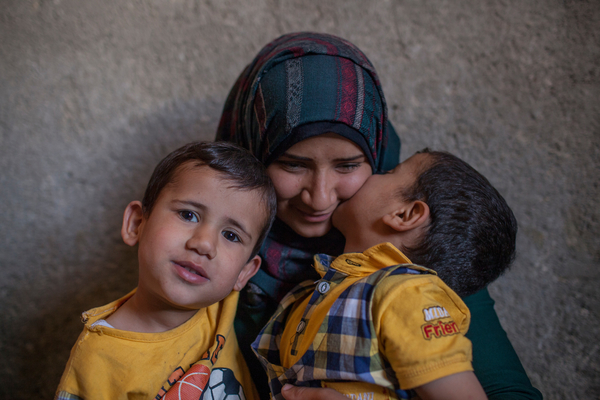
The war in Syria has devastated Iman’s life. Exposed to years of horrific violence and conflict, she lost her husband and her home. She was forced to flee Aleppo with nothing but her four children. But just when Iman thought they were safe, they faced a threat they couldn’t escape: winter.
As temperatures plummeted, their make-shift shelter could not protect them from the snow storms and freezing temperatures. Wet, cold and without warm clothing, her children were helpless against the harshness of winter.
Iman’s baby was the first to die. He froze to death while she desperately tried to warm his milk. Then just weeks later, her young daughter passed away. Already weak from hunger, she was unable to fight sickness caused by living in the cold, damp shelter.
Sadly, this nightmare is a reality for millions of Syrian families.
Iman and her two remaining sons now live in a camp for displaced families within Syria. And with UNICEF support, they’ve received the warm clothing, thermal blankets and medicine needed to keep them safe and warm.
“I live for my children,” says Iman. “I pray for a better life for them.”
As children fought for their lives, the needs kept growing. More than 11 million children were desperate for food, clean water, medicine, education and safety. 1.8 million children were acutely malnourished, and half of all children were stunted because of a lack of vital nutrition.
UNICEF is working to restore the physical and mental health of children, and protect them from hunger and disease.
A UNICEF airlift provided six million doses of life-saving vaccines, to protect against tetanus and diphtheria, and almost five million children under the age of five were vaccinated against polio. In the rugged mountains of Yemen, we even enlisted an unusual ally to help with our mission! To find out more about our donkey teams, keep swiping.
But the biggest concern was cholera. At its peak, 50,000 cases were being reported every week - almost half of them children. Over the course of 2017 there were more than a million suspected cases, and 2,237 deaths.
In response, UNICEF provided five million people with clean water, supplied fuel and power to keep water treatment stations working, administered four million sachets of rehydration treatment, supplied almost a million bags of intravenous fluids, and reached 18.4 million people with information about cholera and diarrhoea.
With only 45 per cent of health facilities operating in Yemen, we provided essential medical supplies and covered operational costs to ensure 3,069 health facilities could remain open. We paid the salaries of doctors and nurses, many of whom had not been paid for over ten months, so they could continue to treat children and their families.
To support malnourished children, we provided 10,000 tonnes of nutrition and hygiene supplies, medicines, and medical equipment. More than 2.3 million children were screened for acute malnutrition and 4.7 million children received nutritional supplements.
And UNICEF provided more than half a million children with psychosocial support and access to spaces where they can run, sing, and play. In those moments, those children who have experienced so much, can experience a childhood once more.
4.8 million children in Yemen were vaccinated against polio.
3 million children were treated for severe acute malnutrition, using ready-to-use therapeutic food.
5.7 million people in Yemen were given access to safe water, protecting them from deadly water-borne diseases.
Ahmed’s donkey is arguably the most important member of his vaccination team. This sturdy, resilient animal carries an all-important gas cylinder that powers a generator to keep the vaccine container cold, and prevent vaccines from degrading.
"We need to vaccinate our children because they are a part of us," Ahmed said, "We will not leave out even a single child."
Pre-school education gives children the best chance to succeed and stay in school. In fact, investing in early childhood development is one of the best ways to improve educational achievement and increase skills, capabilities and productivity. But in 2016 just 16.9% of children in Timor Leste were enrolled in pre-school, one of the lowest rates in Southeast Asia.
There is a critical shortage of pre-schools, especially in remote areas where 72% of the population lives. Children have to wait until they are old enough to walk to get an education because of limited public transport.
When the time comes to go to school, most children aren’t ready. They have never held a pencil, seen a book, or learned the alphabet. Even sitting in class is a foreign concept. This has a major impact on their education – 24% of children had to repeat their first year of primary school and 26% dropped out of school before their third year.
The quality of many teachers is poor because of inadequate training, limited materials and inconsistent standards. Children with disabilities are not expected or encouraged to join pre-school at all. Since 2014, UNICEF NZ has partnered with the Timor Leste Government, the NZ Government, H&M Foundation and Morgan Foundation to change this.
In Ermera and Viqueque districts, where enrolment was as low as 4.6%, 89 community pre-schools were established. Classes are held in community buildings or in the homes of senior villagers, and children are taught by facilitators selected by each village. More than 2,000 kids attended, and 600 have ‘graduated’ and gone on to start school.
Prior to the pre-schools, around 70% of children couldn’t recognise letters or numbers. Now, after just one year of pre-school education, most students are confidently counting and recognising letters. Some are even writing their names!
Timor Leste has an ambitious goal to make pre-school available to every child by 2030. With your support, we can give children in Timor Leste the best start in life.
8.8 million children in emergencies were reached with education.
12.5 million children received education materials last year.
259 million additional children have been enrolled in education between 2000 and 2015.
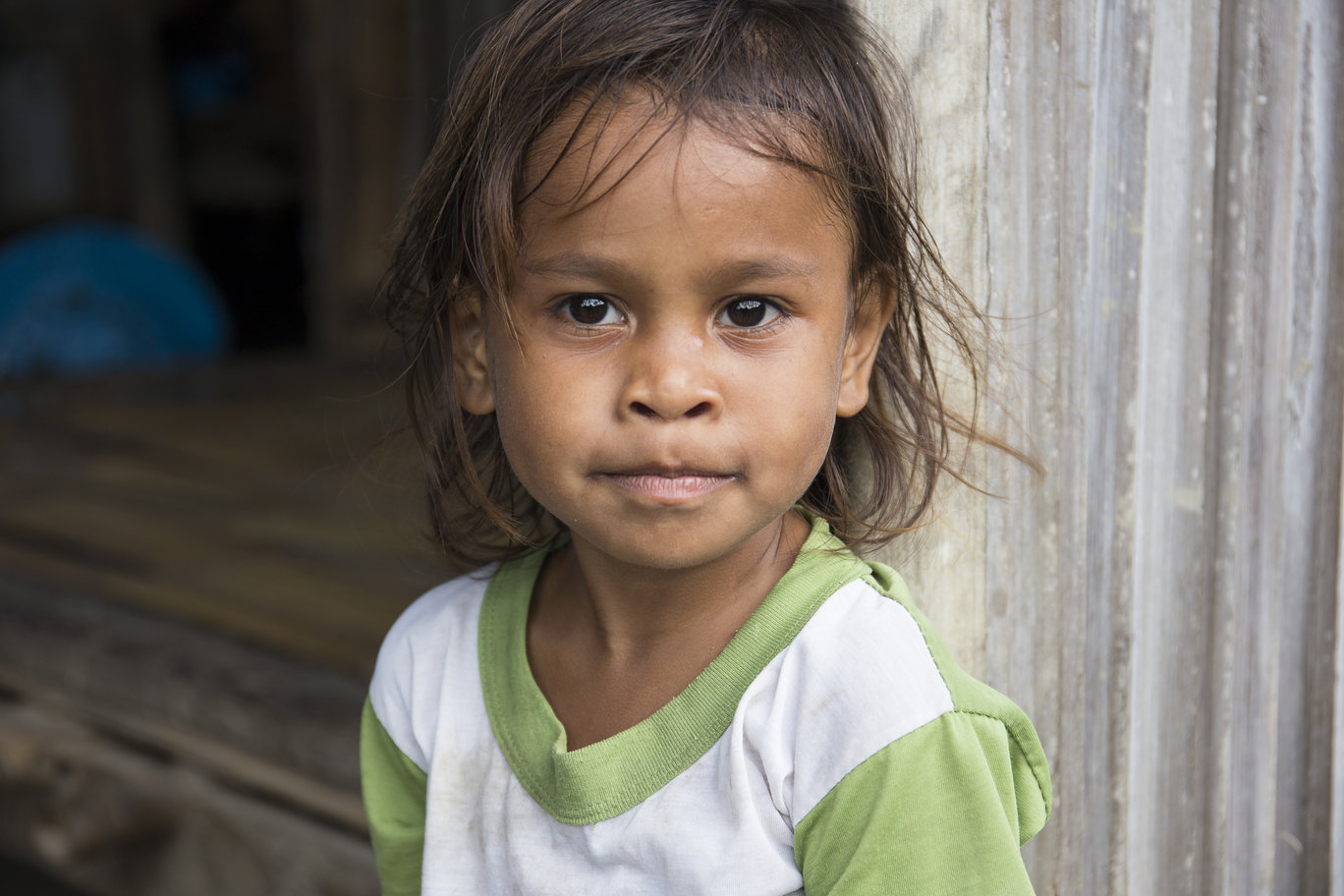
Like most children in Timor-Leste, Nevia lives in a small rural village. These villages are often remote and many kilometres from the nearest town, where the majority of pre-schools are located.
It used to be impossible for Nevia to get to pre-school. There are no roads, and certainly no public transport to catch, and at her age, she couldn’t walk for hours along a trail to get there and back each day.
Nevia is now able to attend pre-school thanks to our generous donors who have made it possible to bring education to her village.
UNICEF works in Nevia's village of Darabay, running the Uato-Lari alternative early childhood education centre. The closest government funded pre-school is 30 minutes away and has seventy students per teacher. UNICEF’s centre is right in the village, with much smaller class sizes.
Nevia’s mum Amelia is very proud of the progress her daughter has made. "Now she sings at home, can do drawings and knows the alphabet."
UNICEF New Zealand has long been at the forefront of demanding action on child poverty. We helped form a network of like-minded groups and organisations to push for Government action on child poverty, and we have pushed hard to make child poverty an issue of national discussion.
- In 2011, 5% of New Zealanders considered child poverty the most important issue facing New Zealand
- By 2016, 22% of New Zealanders considered poverty the most important issue
- UNICEF’s research and reports helped inform and shape public debate
- Through the 2017 election we pushed five key messages relating to child poverty: health, housing, education, violence and youth suicide
- Following the election the government announced that, for the first time, there would be a Minister for Child Poverty Reduction
- An ambitious target was set by the Government to reduce the number of kiwi kids growing up in poverty by almost 100,000 within a decade.
In December 2017, UNICEF held an event at Parliament to acknowledge the extraordinary progress that had been made and the significance of the child poverty reduction measures.
This special celebration was attended by a number of key supporters: Prime Minister and Minister of Child Poverty Reduction Rt. Hon. Jacinda Ardern, Minister for Children Hon. Tracey Martin, Minister of Youth Hon. Peeni Henare, Children's Commissioner Judge Andrew Becroft, Dr Cindy Kiro, Deborah Morris-Travers, Julia Amua Whaipooti, Mana Whenua and Te Atiawa Youth.

In March, U-Report NZ went live! U-Report is an innovative digital platform that lets young people have their say on important issues.
Through discussion, sharing information, and online polling they are able to share their views on a wide range of issues affecting young people in New Zealand. The polls generate data which is used to bring a youth voice to UNICEF’s advocacy.
Thanks to U-Report, we amplified the voices of young people on important issues such as mental health, democracy and youth voting, consent and sex education, the environment and climate change.
We partnered with Girl Guides, Ministry of Youth and Development, and grassroots youth organisations such as Naenae Clubhouse, Wainuiomata Hashtags, and Inside Out. And we’ve formed a U-Report youth leadership squad of nine young people who are committed to guiding the programme.
After launching in March, more than 600 young people signed up to become U-Reporters in 2017.
All children have the right to voice their opinions on matters that are important to them.
Masterton City Council was investigating how to improve the town’s central business district. UNICEF New Zealand's 'Map Your World' initiative gave students from Masterton the chance to present their ideas on how their town should look, and the opportunity to make decisions about their community.
Working alongside their mentor, Bailey Peterson, the students presented ideas on how to improve the CBD after surveying whanau, classmates and the wider community about how they wanted to live, learn and play.
Some of the ideas presented to the mayor and elected councillors included creating community gardens and green public areas, establishing youth centres and pedestrianising part of Queen Street. Ka pai!
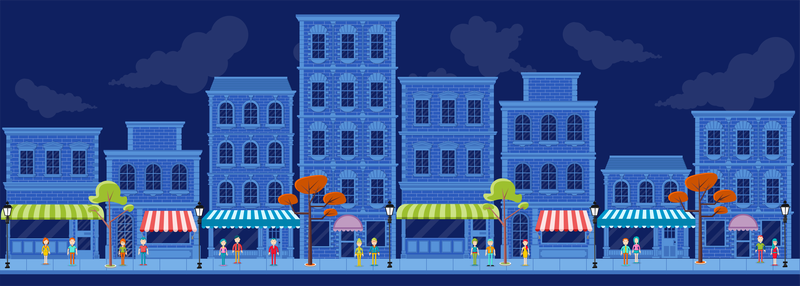
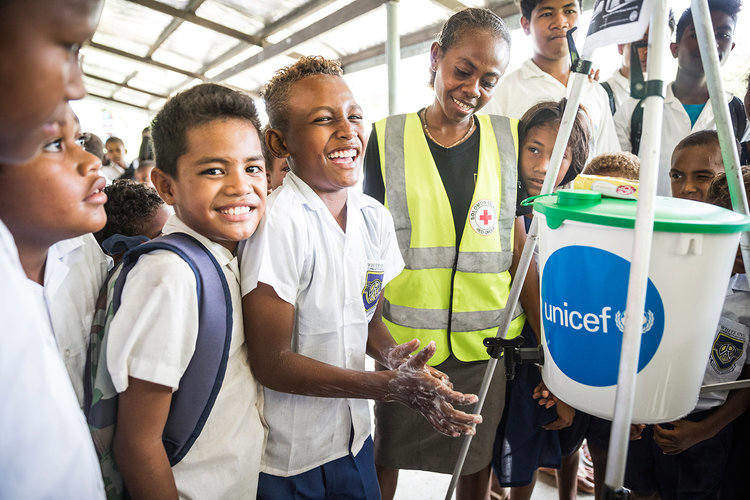
Patty Patrick, 10, washes his hands next to a Red Cross staff member during a workshop organised by UNICEF with their partners from the Red Cross. UNICEF/Donnell
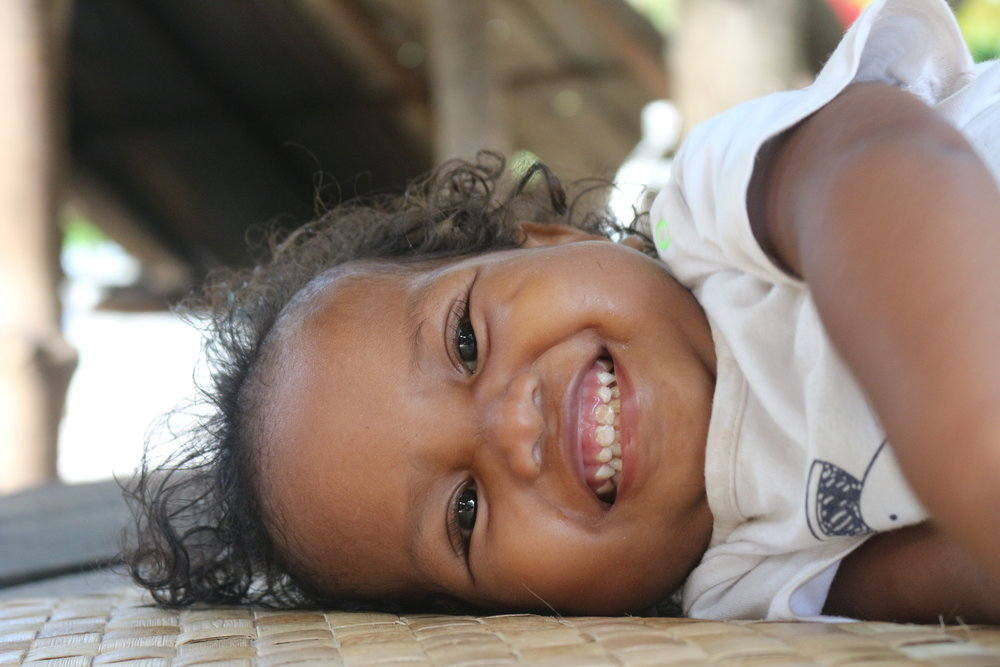
Arirei, 2, smiles while at the UNICEF-supported Banraeaba Clinic in Kiribati with her mother Karateata. UNICEF/Knowles
Kiribati, Early Childhood Care and Education (ECCE)
The early years of a child’s life are crucial. With funding from the New Zealand Ministry of Foreign Affairs and Trade Aid Programme and NZ public donations, UNICEF launched a 3 year project. It is called ‘Strengthening Early Childhood Care and Education and Positive Parenting in Kiribati’ and done in partnership with the Government of Kiribati. Parents participated in Positive Parenting workshops run by five trained ‘champions’ in 10 locations throughout Kiribati.
Timor Leste Community-Based Pre-schools Projects
UNICEF, with support from MFAT, the Morgan Foundation and donations from the public in New Zealand, improved access to quality community-based pre-schools in Timor Leste.
The projects are strengthening 120 pre-schools in remote areas to develop a sustainable model for Government and communities. UNICEF partnered with the University of Waikato to conduct an analysis of the community-based pre-school sector and help determine the next phase of the project.
Vanuatu WASH in Schools
With support from MFAT, the David Ellison Trust and donations from the public, UNICEF began working with the Government of Vanuatu on a five-year WASH project in 79 schools in Penama Province. 63% of schools in Penama reported an unsafe water supply. Girls were often absent due to the lack of adequate menstrual hygiene management in schools.
A National WASH in Schools framework was developed. 1,701 children in 13 schools received hygiene promotion activities. Wash stations were built and soap provided to encourage the habit of handwashing.
Water for Life Project Vanuatu
With support from MFAT, UNICEF completed a WASH project on Tanna island. 5,600 people now have access to safe water and knowledge of safe hygiene practices. In all communities ram pumps and piped systems were designed and installed by NZ engineer Adam Pearse and a team from Tanna island.
Solomon Islands Better Learning Environment (SIBLE) Project
We started a project to provide WASH facilities for 42 schools and solar power for 7 schools in Guadalcanal. This was done with support from MFAT and our donors, and in partnership with Solomon Islands Ministry of Education and Human Resource Development (MEHRD).
WASH in Schools National Standards were finalised and approved by MEHRD. Our partner Environmental Science and Research produced a teacher training manual to support schools. 23 schools installed their own handwashing facilities, and 6 schools set up WASH clubs for students.
One school completed a full upgrade to their toilet block, with disabled access and menstrual hygiene management facilities. More than 600 students can now access improved toilets and 2,000 students now have access to handwashing facilities.
With support from the Partnership for the International Development Fund Aid, UNICEF installed WASH projects in 32 schools on four ‘outer’ islands of the Gilbert group in Kiribati: Abaiang, Maiana, Marakei and North Tarawa from 2015-2018.
This is a challenging environment with limited communication and travel connections to the main island of South Tarawa. However, the Kiribati Ministry of Education (MOE) and all 32 schools rose to the challenge, and have completed their own toilet facilities. All meet MOE ratios of boys and girls per toilet, handwashing stations have been constructed in all schools, and rainwater harvesting systems installed to ensure water for drinking and washing is always available.
In 2015, prior to the project, the MOE reported just 3 per cent of schools had access to basic sanitation, and just 2 per cent had access to safe drinking water. So far, the project has benefitted a total of 2,194 boys, 2,268 girls and 219 teachers across the four islands.
An independent review of the project, confirming progress and achievements, was completed in October 2017 by the International Water Centre.
With a total of 94 schools in Kiribati, KWIS has contributed to a ten-fold increase in access to water and sanitation with
- 30% of schools now having rainwater harvesting tanks and wells
- 34% of schools now have toilets that meet the MOE toilet to pupil ratio
It found that over the course of the project, government officials came to better understand and promote the importance of WASH in Schools. The report acknowledges the project’s success was due to engaging government officials, schools, and communities, which will ensure ongoing and replicable impact and efficacy. The schools often used their own resources to ensure the progress of construction. One key finding was the importance of finding time to provide technical support in order to ensure the appropriate selection of facilities.
This project has provided valuable information that will be used to inform and influence ongoing UNICEF NZ projects including the Solomon Islands Better Learning Environments and the Vanuatu WASH In Schools activities.
Pre-positioned Emergency Supplies in the Pacific
With support from MFAT, UNICEF provided pre-positioned emergency response supplies in Fiji and Samoa so that we can respond immediately to disaster-affected areas in the Pacific region. The supplies included water, sanitation, health and education resources such as school-in-a-box kits.
South Sudan Famine Response
With support from MFAT and donations from the public, we supported the relief effort in South Sudan where huge numbers of children were at risk from malnutrition.
The New Zealand contribution meant that 3,650 severely malnourished children were treated with life-saving therapeutic food and health services, resulting in an 83.6% recovery rate. Another 2,750 malnourished children will receive treatment in 2018.
Ambae Volcano, Vanuatu
UNICEF NZ with support from MFAT and donations from the New Zealand public, supported the people of Ambae after volcanic ash contaminated water sources and destroyed crops and livestock.
The entire Ambae population (11,600 people including 5,220 children) was evacuated off the island for their own safety in September 2017. Once the situation had settled, residents were repatriated back on to the island and UNICEF responded with the distribution of WASH and education supplies.
Fundraising income includes donations and gifts from the New Zealand public, schools and businesses, major donor etc, as well as income from legacies.
Project funding includes grants from the Ministry of Foreign Affairs’ NZPFID programme for overseas projects. Other income includes grants for monitoring international projects, grants from UNICEF Geneva to undertake new fundraising initiatives, investment income, a grant from the Childrens Foundation and grants for New Zealand advocacy and child rights education work.
The following income does not include the $1,103,296 USD raised through the New Zealand led initiative Workout for Water. These funds were directed to the wider organisation and are not reflected in UNICEF NZ's figures.
Full financial reports are available upon request.
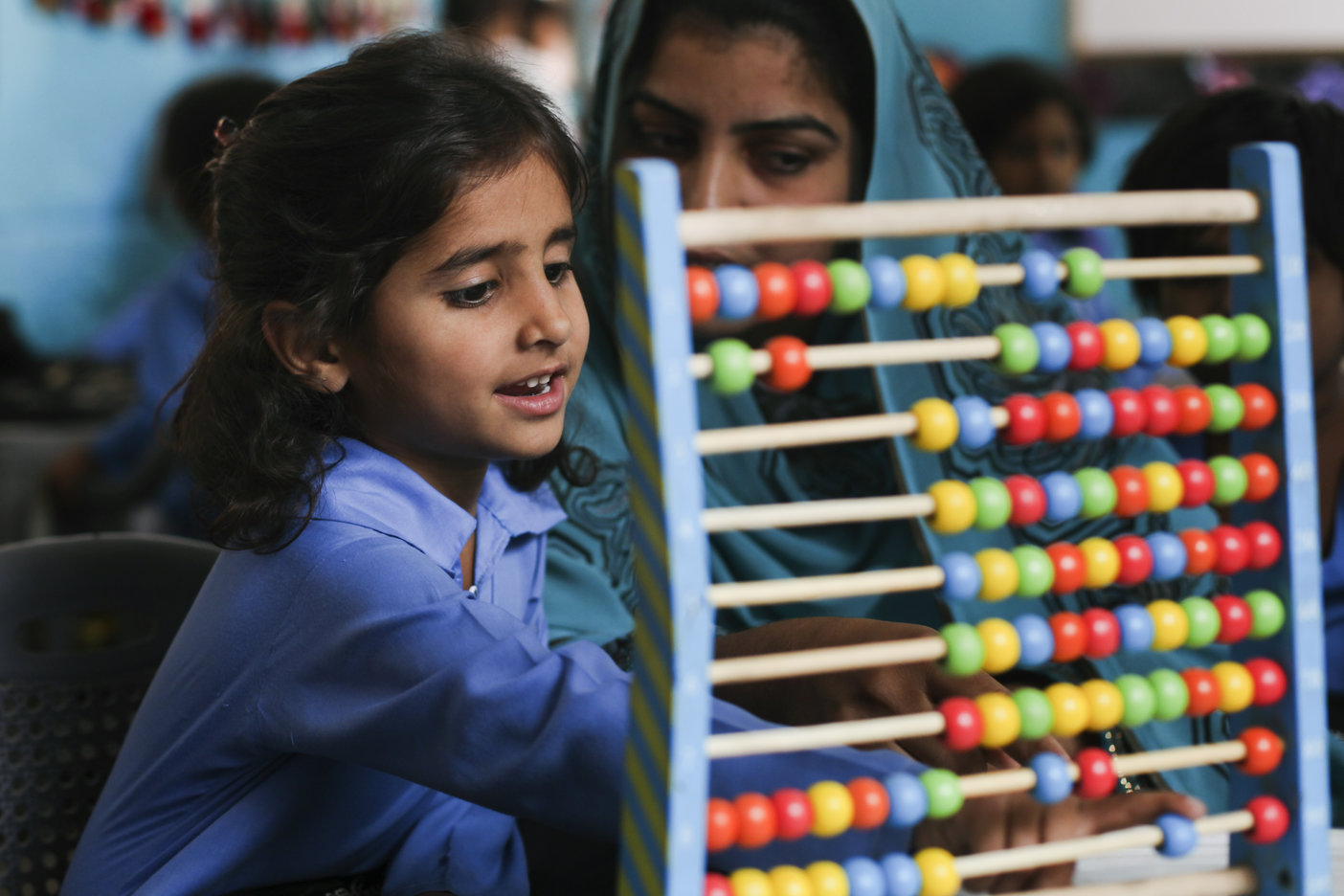
Programmes expenditure includes humanitarian development and emergency response work internationally, as well as activities to inform and educate New Zealanders on development and humanitarian issues.
Fundraising expenditure is used to develop, retain and inform donors so as to fund programmes for children.
Administration costs are costs required to efficiently run the organisation and help it meet its accountability requirements. Costs includes items such as staff costs for finance and administration as well as audit fees, insurance and office maintenance costs.
The following income does not include the $1,103,296 USD raised through the New Zealand led initiative Workout for Water. These funds were directed to the wider organisation and are not reflected in UNICEF NZ's figures.
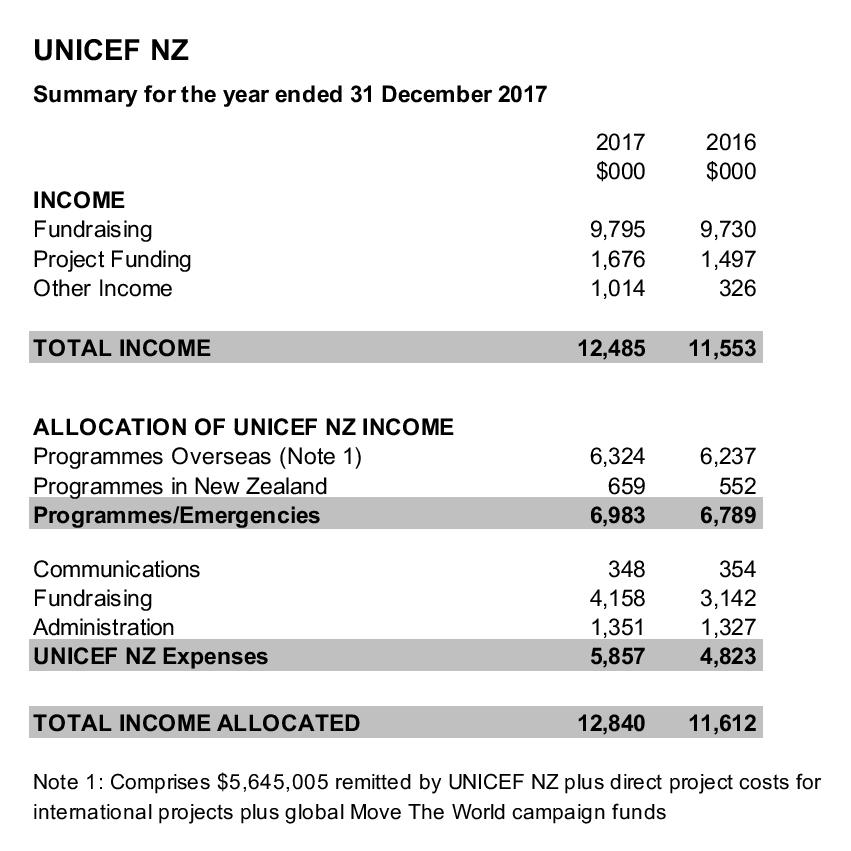
Here at UNICEF NZ, we are constantly working to raise as much money for children as possible, as efficiently as we can. But figuring out the best way of doing this costs money, and can take a long time for changes to take effect. Across the global UNICEF family, national committees - like UNICEF NZ - provide over 75% of everything they raise to the wider UNICEF organisation. In any one year, some committees will be able to provide more than 75% and some will provide less. It all depends on the cost of fundraising in the local market, and how much investment an individual committee is making in growth and innovation.
Here in New Zealand, we’re currently investing heavily in programmes to secure more long-term donors to UNICEF and working hard on a global fundraising campaign. In the long-term these investments will set us up to greatly increase our fundraising ability and provide huge benefits for children, but in the short-term, we aren’t able to send as much money as normal to UNICEF.
The New Zealand Government also contributes $6m annually to UNICEF internationally, but this amount does not come through UNICEF NZ’s accounts. This contribution is, in part, a recognition of UNICEF’s work in New Zealand and throughout the Pacific. Of all funds received by UNICEF internationally i.e. from governments, foundations, corporates and national committees etc, roughly 90% is used to directly fund programmes for children in the field.
Everything we do is for the benefit of children, and we are committed in our efforts to ensure we continue to provide for them in the future.
